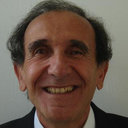Impact of hypobaric hypoxia in pressurized cabins of simulated long-distance flights on the 24 h patterns of biological variables, fatigue, and clinical status.
Sleutelwoorden
Abstract
Long-distance flights can cause a number of clinical problems in both passengers and crewmembers. Jet lag as well as mild hypoxia resulting from incomplete cabin pressurization could contribute to these problems. The objective of this study was to assess, using a chronobiological approach, the clinical impact of diurnal hypobaric, hypoxic exposure on fatigue and other common symptoms encountered during high-altitude exposure and to measure changes in blood chemistry (i.e., plasma creatinine, urea, uric acid, sodium, calcium, phosphorus, glycemia, and lipids). Fourteen healthy, diurnally active (from 07:00 to 23:00 h) male volunteers, aged 23 to 39 yrs, spent 8.5 h in a hypobaric chamber (08:00 to 16:30 h), at a simulated altitude of 8,000 ft (2,438 m). This was followed by an additional 8.5 h of study four weeks later at a simulated altitude of 12,000 ft (3,658 m). Clinical data were collected every 2 h between 08:00 and 18:00 h, and biological variables were assayed every 2 h over two (control and hypoxic-exposure) 24 h cycles. Clinical symptoms were more frequent with the 12,000 ft exposure. Wide interindividual variability was observed in the clinical tolerance to prolonged hypobaric hypoxia. The 24 h profiles of most biochemical variables were significantly altered at each altitude, with changes in mean plasma levels and a tendency toward phase delay, except for uric acid, which showed a phase advance. Changes in appetite mainly occurred with the simulated 12,000 ft exposure and may have been associated with changes in the postprandial glycemia profile. Finally, though the observed biochemical changes were significant, their clinical relevance must be clarified in studies involving actual long-distance flights.


